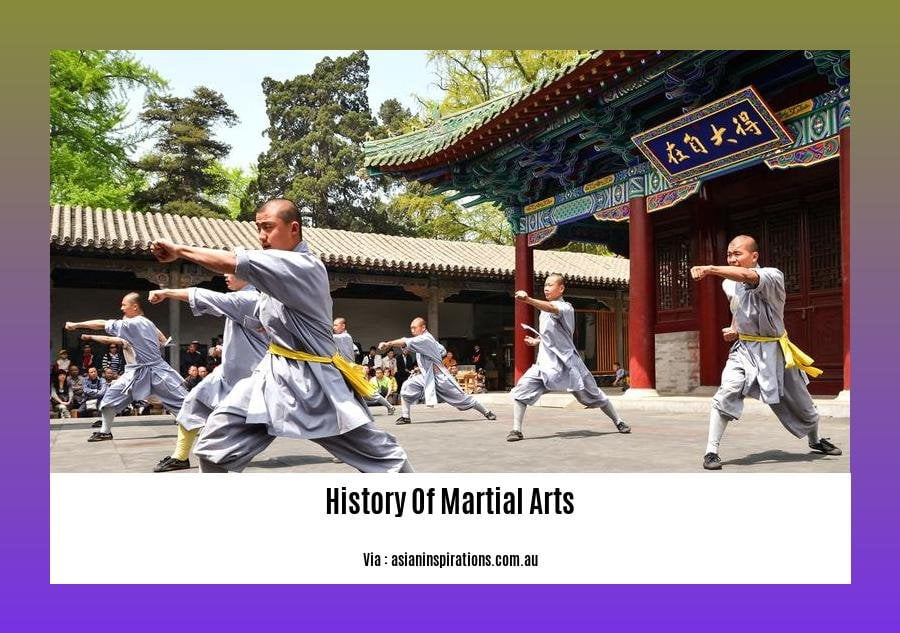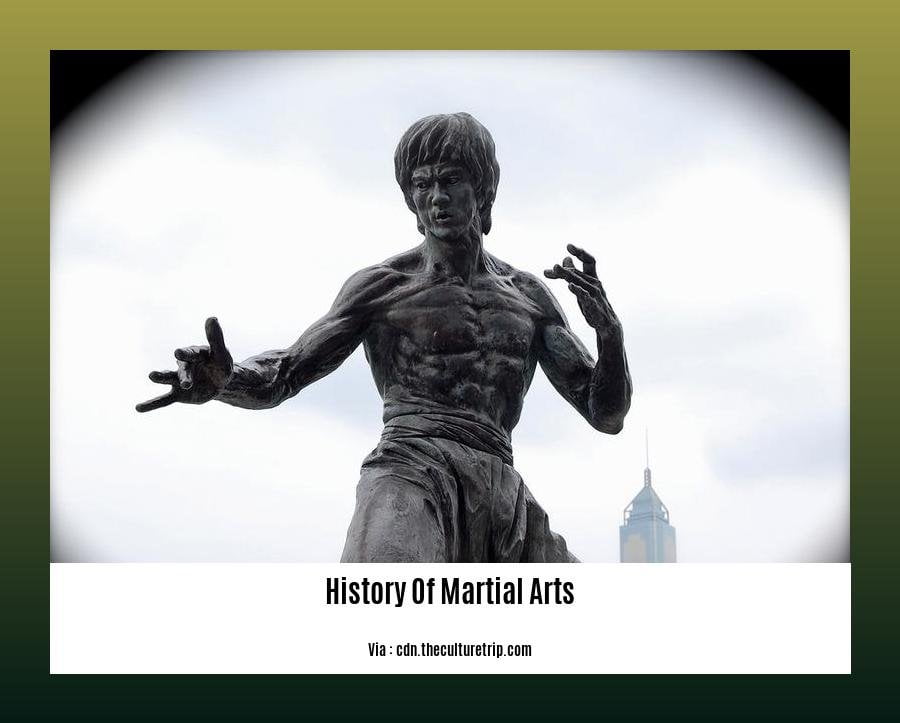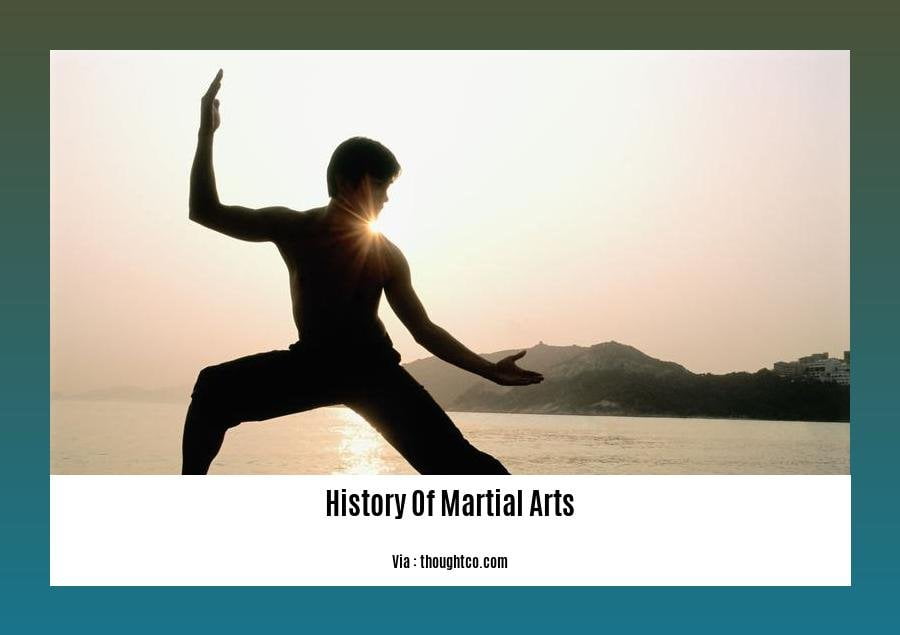Martial arts, with their rich history and cultural significance, have captivated the world for centuries. From the ancient battlefields of China and Japan to the modern-day dojos and MMA arenas, the evolution of martial arts is a fascinating journey through time and cultures. [- Exploring the Rich History of Martial Arts: A Journey Through Time and Cultures] delves into the origins and development of these combat systems, shedding light on their profound impact on human history.
Key Takeaways:
Martial arts originated around 480 BC, due to the need for survival against animals and tribal conflicts.
Accumulated fighting techniques and experiences were documented and passed down through generations.
The invention of weaponry influenced the development of new fighting methods.
The history of martial arts can be divided into three main periods: Early, Evolutionary, and Modern.
Modern martial arts began to take shape in the 19th century.
Due to its complexity, this summary offers a concise overview of the vast history of martial arts.
History of Martial Arts


The history of martial arts is a captivating journey that spans centuries and cultures. From ancient battlefields to modern-day dojos, the evolution of martial arts reflects the ever-changing needs and desires of humanity.
Early Foundations
The earliest forms of martial arts emerged in response to the primal need for survival. Around 480 BC, as humans battled both animals and rival tribes, they developed techniques that would later form the basis of martial arts. These techniques were often passed down orally from generation to generation, evolving and adapting to meet the challenges of a harsh and unforgiving world.
Weaponry and Innovation
The invention of weaponry, such as swords, spears, and bows and arrows, led to the development of specialized fighting techniques. Warriors trained to wield these weapons effectively, creating new forms of combat that combined strength, speed, and precision.
The Three Eras of Martial Arts
The history of martial arts can be broadly divided into three periods:
– Early Period: This period, which lasted until the 16th century, saw the emergence of the earliest martial arts systems. Techniques were primarily focused on self-defense and survival, with an emphasis on practical applications.
– Evolutionary Period: During this period (16th to 19th centuries), martial arts began to evolve into more codified systems. Techniques became more refined, and philosophical principles began to be incorporated into training.
– Modern Period: The modern period, which began in the 19th century, saw the rise of standardized martial arts systems. These systems were often associated with specific schools or lineages and emphasized physical fitness, self-defense, and personal development.
Martial Arts Today
Today, martial arts have become a global phenomenon, practiced by millions of people worldwide. They encompass a vast array of styles, each with its own unique history, techniques, and philosophies. From the graceful movements of Tai Chi to the dynamic strikes of Karate, martial arts offer something for everyone, regardless of age, ability, or background.
To delve into the intriguing background of the captivating masks that adorn the streets of Venice, explore our comprehensive article on the history of masks in Venice. Embark on a journey through time as you learn about the ancient origins of massage and its evolution over the centuries in our detailed timeline of the history of massage.
History of Martial Arts in China
Martial arts in China boast a rich and extensive history, tracing back over 4,000 years. Its roots can be found in the Zhou Dynasty, where self-defense techniques were developed to protect against wild animals and rival tribes.
Over time, these techniques evolved and diversified, giving rise to various schools and styles. These schools often emphasized different aspects of combat, such as close-range fighting, long-range striking, or grappling.
During the 20th century, Chinese martial arts gained global recognition, with the establishment of the Republic of China in 1912 marking a pivotal moment. During this period, many martial arts masters began teaching their skills to students from around the world, contributing to the spread of Chinese martial arts beyond its borders.
However, the Cultural Revolution, which spanned from 1966 to 1976, brought a period of suppression and destruction for martial arts in China. Many practitioners were forced to cease practicing or flee the country to avoid persecution.
Following the end of the Cultural Revolution, Chinese martial arts underwent a period of centralization under the communist party. This led to the creation of standardized forms of kung fu and tai chi, which were promoted as a form of physical exercise and cultural heritage.
Despite the challenges it has faced, Chinese martial arts have endured and continue to flourish both within China and around the world. Today, there are hundreds of different styles of Chinese martial arts, each with its unique history, techniques, and philosophy.
Key Takeaways:
Origin and Evolution: Chinese martial arts have a long history, tracing back over 4,000 years, and have evolved from self-defense techniques developed in the Zhou Dynasty.
Spread and Recognition: In the 20th century, Chinese martial arts gained global recognition through the establishment of the Republic of China and the teaching of martial arts masters to students from around the world.
Cultural Revolution Impact: During the Cultural Revolution, martial arts in China faced suppression and destruction, leading to the persecution of practitioners and the cessation of practices.
Centralization and Standardization: After the Cultural Revolution, Chinese martial arts underwent centralization under the communist party, resulting in the creation of standardized forms of kung fu and tai chi.
Continued Flourishing: Despite these challenges, Chinese martial arts have endured and continue to flourish both within China and around the world, with hundreds of different styles and philosophies.
Sources:
[1.
2.
FAQ
Q1: During which period did the earliest martial arts emerge?
A1: The earliest martial arts originated around 480 BC, during the Early history period.
Q2: Which country has a martial arts history spanning over 4,000 years?
A2: China boasts a rich martial arts history dating back over 4,000 years, traceable to the Zhou Dynasty.
Q3: When did martial arts gain global recognition?
A3: Martial arts gained worldwide recognition during the early 20th century when they were introduced to the West, expanding beyond China’s borders.
Q4: What happened to martial arts during China’s Cultural Revolution?
A4: During the Cultural Revolution, martial arts faced harsh suppression and destruction in China, leading many practitioners to flee the country or discontinue their practice.
Q5: How did the communist party influence Chinese martial arts?
A5: Under the communist party’s rule, Chinese martial arts underwent centralization, resulting in the development of government-approved forms of Kung Fu and Tai Chi.












